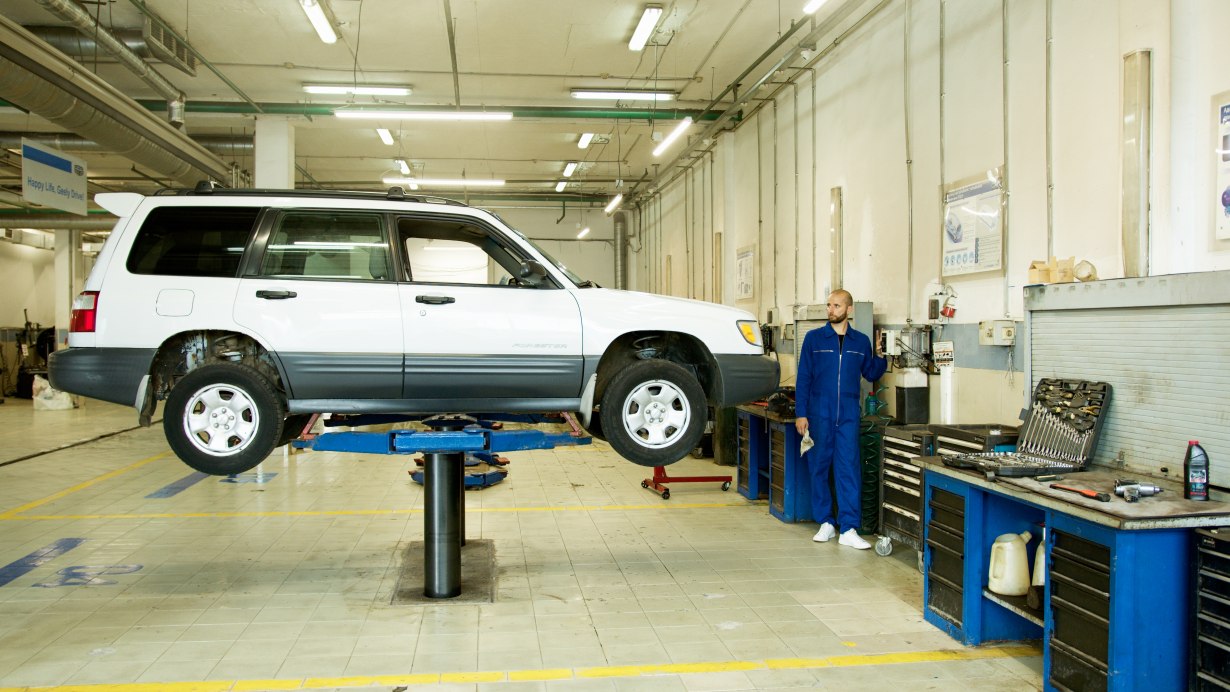Aftermarket exhaust systems are among the best ways to get the most power out of your vehicle. It generally improves the airflow inside your exhaust. When there’s a smoother flow of air in your exhaust, it can maximize your vehicle’s horsepower and minimize fuel consumption.

Photo credit: pexels / Artem Podrez
The question is, how to choose the right aftermarket exhaust system? Before picking the ideal one for your vehicle, there is much nitty-gritty to be aware of.
Exhaust systems are typically categorized into cat-back, axle-back, and header-back. In theory, they all provide aesthetic and performance improvements in your vehicle. However, there’s no one-size-fits-all exhaust system.
Each exhaust component and the order they’re installed in the system vary from vehicle to vehicle. For example, each of the Manta Performance Exhausts is based on a different vehicle’s overall design, emission requirement, permutations and combinations, engine layout, and more. Hence, each type of aftermarket exhaust system offers different kinds of benefits to your vehicles.
Cat-back exhaust systems are specifically designed to free up your exhaust gas flow. The system comprises the catalytic converter (where the “cat” term in its name comes from) and all the components behind it (hence the name “back”), including the mid-pipe, muffler, and exhaust tip.
Compared to factory exhausts, cat-back exhausts have a larger diameter and are made with high-grade shafts. As a result, they create more space for the smooth flow of air, causing the vehicle to produce better sound quality and increased horsepower.
Additionally, when there’s an improved airflow in your exhaust system, your vehicle’s engine won’t work as hard to eliminate exhaust fumes. This decreased resistance cuts down the load on the engine, resulting in better fuel economy.
Like cat-back exhaust systems, axle-back exhaust systems include each component installed beyond the axle, including the muffler and the exhaust tip. However, the only difference is that axle-back exhausts don’t add power. Instead, its sole modification replaces the muffler, leaving the mid-pipe, catalytic converter, and resonator still restricted.
Axle-back exhaust systems are only installed for a simple, safe bolt-on mod to make your vehicle look and sound better. However, if your vehicle’s muffler is super restrictive, adding an axle-back exhaust could yield a minuscule power increase.
If you want to take your exhaust system to the next level and the price won’t daze you, consider replacing everything in your vehicle’s exhaust system, from the exhaust manifold’s outlet to the back to the tailpipe. This modification is called header-back or full exhaust systems.
Installing header-back exhaust systems makes the entire engine cleansing pipework and emission cleansing component more efficient. It also removes all unnecessary or restrictive noise abating chambers. Since all pipework-related bottlenecks are removed, your vehicle will have improved back-pressure reduction ratings, performance, and fuel economy.
The next question you’ll probably ask is: what’s the best way to get the best noise out of your 4WD? It depends on what you consider a better sound, which is completely subjective.
If you want your vehicle to sound like a 90s poser chainsaw powered civic, delete the mufflers. However, be prepared to be pulled over. Always turning your whip loud can be a nuisance to other people, specifically your neighbors. More importantly, mufflers are mandatory in most places. These areas have laws in place that restrict exhaust volume.
In contrast, add a resonator if you want a deep bark whenever you stomp the loud pedal or a throaty growl at idle. The thing is, you might not want to run a resonator on naturally aspirated vehicles. They can be very loud, especially where there are no mufflers in them.
Apart from deleting the muffler or resonator, other exhaust modifications can help you find the perfect sound note for you. It’s best to seek professional help to easily get the tuned sound you want out of your vehicle while remaining street legal.
When it comes to affordability, aluminized steel is the best choice. Aluminum exhaust systems are much lighter and easier to work with than their stainless steel counterparts. They usually have a two-year warranty. However, while they have a good coat of heat proof protection, aluminum exhaust systems aren’t the best for corrosion resistance. They could be enough if you reside in a dry environment with warm winters.
Conversely, if you’re looking for a material that could last forever, stainless steel exhausts can guarantee that. They’re renowned for being high-quality and long-lasting since they’re coated with chromium, nickel, and manganese, creating a corrosion-resistant alloy. Hence, they’re the best options if you’re living near saltwater or where there’s a lot of snowfall. In addition, due to its great corrosion resistance, stainless steel has a warranty of up to 10 years.
Choosing the best type, sound, and material for your aftermarket exhaust system depends on your preference, vehicle, and financial capability. Moreover, there are many things you need to know that were not mentioned here, so it’s best to do more research and seek professional help.